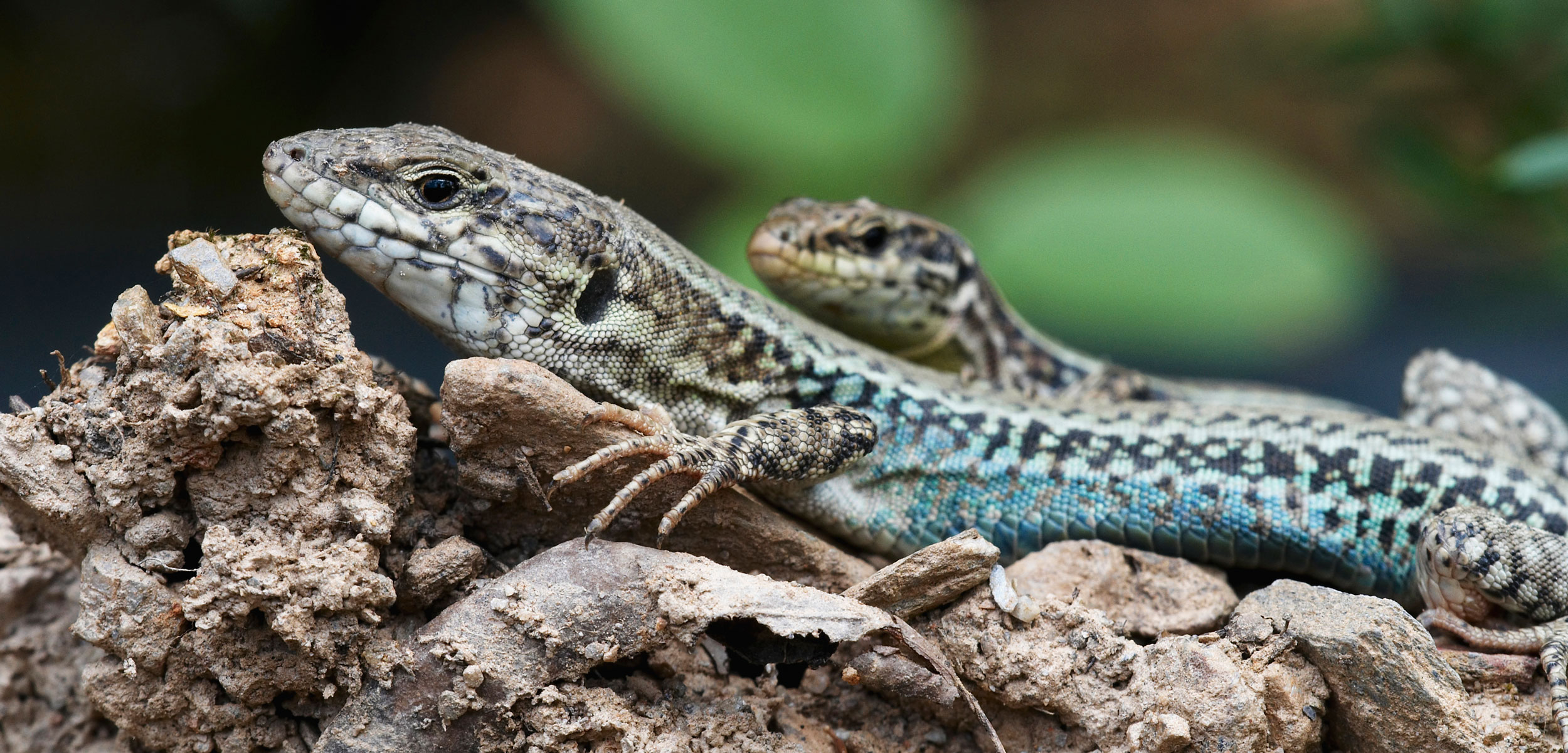Cannibal Lizard Snags a Mouthful
Researchers spotted one Aegean wall lizard eating another for the first time.
Article body copy
Indiana Madden was strolling along a road under the hot Mediterranean sun when she noticed something peculiar. Sitting on a short rock wall, a large male lizard had another lizard in its mouth. The undergraduate field assistant, who was on the island studying lizard coloration, whipped out her iPhone and began recording. Madden’s research advisor—University of California, Merced herpetologist Kinsey Brock—was glad that her student was so quick to act. That video, along with subsequent observations on the Greek island of Siros, led to the first formal documentation of cannibalism in the Aegean wall lizard.
Video by Indiana Madden
The Aegean wall lizard occupies a range across the mainland of Serbia, Macedonia, Albania, and Greece, as well as multiple Aegean Islands. Researchers suspect that the lizards divided into isolated groups as rising sea levels created islands starting between 30,000 and 15,000 years ago. Since then, the lizards have evolved into a variety of subpopulations, each adapted to its unique island habitat.
Aegean wall lizards are no strangers to odd eating habits. The species is known to feast on other Aegean wall lizards’ eggs, and will sometimes bite the tails of other adults. But cannibalism had never been seen before.
Studying cannibalism in the wild is difficult, because it relies on opportunistic observations. It’s impossible to know whether the lizard Madden spotted actually killed the one it had between its jaws, or whether it found it dead and simply scavenged the free meal, says Brock.
But if it was indeed cannibalism, as the researchers suspect, it raises additional questions. Cannibalism is not a common practice in the animal kingdom, but when it does arise, it tends to be in places where resources are scarce and it’s difficult for an animal to get enough to eat. In those places, desperate times call for desperate measures. But Siros is a relatively big island rich in natural resources. There are plenty of small invertebrates to eat. So why would one lizard eat another?
Cannibalism can arise for another reason, too, which could explain the large male Aegean wall lizard’s odd mouthful. Cannibalism can be a way of killing off competitors for resources, territory, or access to females, especially when the population density is high, as it is on Siros. Eliminating competition is the driving force—the meal is more of a side benefit.
Greg Pauly, the curator of herpetology at the Natural History Museum of Los Angeles, suspects that a penchant for cannibalism likely predates the lizards’ isolation on Siros, rather than being a trait that later evolved on the island.
Podarcis lizards, the genus that encompasses the Aegean wall lizard, have very generalist diets. Other lizards in the group are known to eat juveniles of their own species. This flexibility in their dietary preferences makes them good colonizers, says Pauly, who was not involved in the research. They’ll eat most anything—apparently including their own.
“If you’re a dietary specialist and you get transported to some far-off land, then you’re in trouble. You’re not going to find what you want to eat,” Pauly says. “But if you’re a generalist, you can probably find something. And that’s true whether you’re at a far-off place or if you get washed out to some island in the Mediterranean.”
Still, that doesn’t explain why lizards practice cannibalism on Siros but not on the other islands, though perhaps it simply hasn’t been observed there yet. Brock says she hopes to tackle this and other questions about Siros’ cannibal lizards next.

